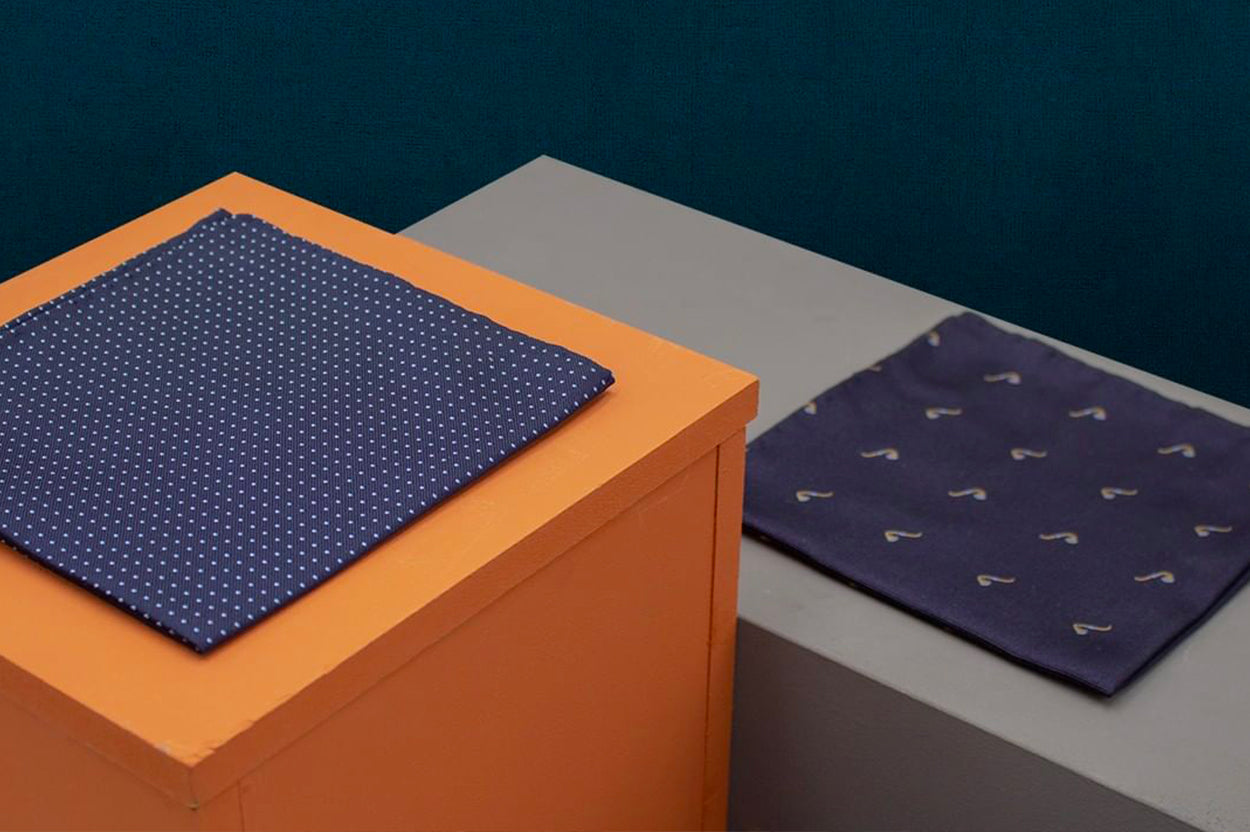
Il fazzoletto da taschino: istruzioni per l’uso
Nasce come ornamento regale, si afferma come tratto distintivo dell’alta società e oggi, dopo un periodo “in soffitta”, è tornato di moda
Il fazzoletto da taschino, conosciuto anche come pochette, è un accessorio irrinunciabile per chi desidera donare al proprio look un tocco di originalità ed eleganza. Si tratta, in fin dei conti, di un piccolo dettaglio, ma capace di fare la differenza. Che si scelga di abbinarlo a una mise da lavoro, a un completo da sera o – perché no? – a un outfit più casual, il fazzoletto regala all’istante personalità e classe a chi lo indossa, a condizione però di sapersi destreggiare tra tessuti, pieghe e colori.
Una trama storica
Si dice che a inventare la pochette sia stato il re Riccardo II d’Inghilterra verso la fine del XIV secolo o che, comunque, fu alla sua corte che se ne diffuse l’utilizzo tra la nobiltà.
Nella Francia del Settecento, il sovrano era solito terminare la sua toilette quotidiana scegliendo in base al proprio umore uno dei fazzoletti colorati e ornati da fiocchi e merletti che un paggio gli offriva su di un vassoio, per poi infilarlo nella tasca della giacca lasciandone fuori un lembo.
Nell’Ottocento, con l’invenzione degli abiti a due pezzi, molti uomini cominciarono a mettere il fazzoletto nella tasca della giacca per evitare che in quella dei pantaloni, a contatto con monete e altri oggetti, si sporcasse.
Fu negli anni Venti del secolo scorso, tuttavia, che divenne un vero e proprio accessorio di moda, svincolandosi definitivamente dall’uso igienico, mentre negli anni Cinquanta e Sessanta impazzò sulle giacche di icone hollywoodiane come Cary Grant, Gary Cooper, Fred Astaire e Clark Gable.
Entrato nel dimenticatoio negli anni Novanta, da qualche anno è tornato prepotentemente alla ribalta, anche grazie al successo di serie americane come Mad Men, in cui la pochette assurge a simbolo dello stile del businessman di successo.

Una pochette per ogni occasione
Oggi, l’utilizzo del fazzoletto da taschino non è limitato solo alle grandi occasioni, anzi! Se indossato in maniera coerente con il resto dell’outfit, garantisce un tocco di originalità e sofisticatezza persino alle giacche più informali, e questo grazie alla grande varietà di fantasie, colori e tessuti in commercio. Generalmente la pochette è di forma quadrata, con la dimensione del lato che varia tra i trenta e i quaranta centimetri, in modo che – una volta inserita nel taschino – non vi affondi o non sporga troppo. Può essere realizzata in diversi materiali, da scegliere in base alla stagione: se con l’inverno è meglio puntare su lana, seta e cashmere, in estate i tessuti da preferire sono lino e cotone.
La scelta del colore e dell’eventuale fantasia può forse risultare più complessa. La regola numero uno, se non sapete da dove cominciare, è la seguente: mai scegliere un fazzoletto da taschino della stessa fantasia di camicia e cravatta! Sarà bene preferire un colore in palette che però non sia particolarmente forte, affinché non distolga l’attenzione dall’insieme. Il fazzoletto bianco è un must su cui puntare per dare un tocco di eleganza all’outfit: si abbina a ogni giacca e va bene per qualsiasi occasione, da una cena a due a un matrimonio. Se invece decidete di indossare un fazzoletto colorato, fate caso alle nuance di cravatta, camicia e calze e verificate che vi sia un accordo complessivo. Attenzione, infine, a non sovrapporre fantasie differenti: se la cravatta è a tinta unita, meglio scegliere un fazzoletto a fantasia per creare un po’ di movimento, e viceversa.
La giusta piega
In che modo indossarlo? Esiste un’infinità di pieghe differenti che si possono realizzare – più o meno facilmente – per inserire la pochette nel taschino. Ai principianti si consiglia di cominciare con la più classica, perfetta per ogni look e semplice da ricreare: la piega “dritta”, detta anche “presidential”, che permette di mostrare solo una piccola striscia di seta o cotone che fuoriesce con discrezione dalla tasca.
Più audace, invece, la piega “a due punte”, ideale per i completi da lavoro più uniformi, dal momento che dona un po’ di movimento pur restando sempre ben ordinata. La piega “a nave da crociera”, con una leggera inclinazione che rende le due punte asimmetriche, è indicata invece per un look più estivo e casual, da realizzare possibilmente con una pochette di lino. Complessa ma di grande effetto, infine, la piega “diagonale”, perfetta con un fazzoletto di seta da sfoggiare nelle grandi occasioni. È proprio vero, come diceva Sherlock Holmes, che «i piccoli dettagli sono di gran lunga i più importanti».


